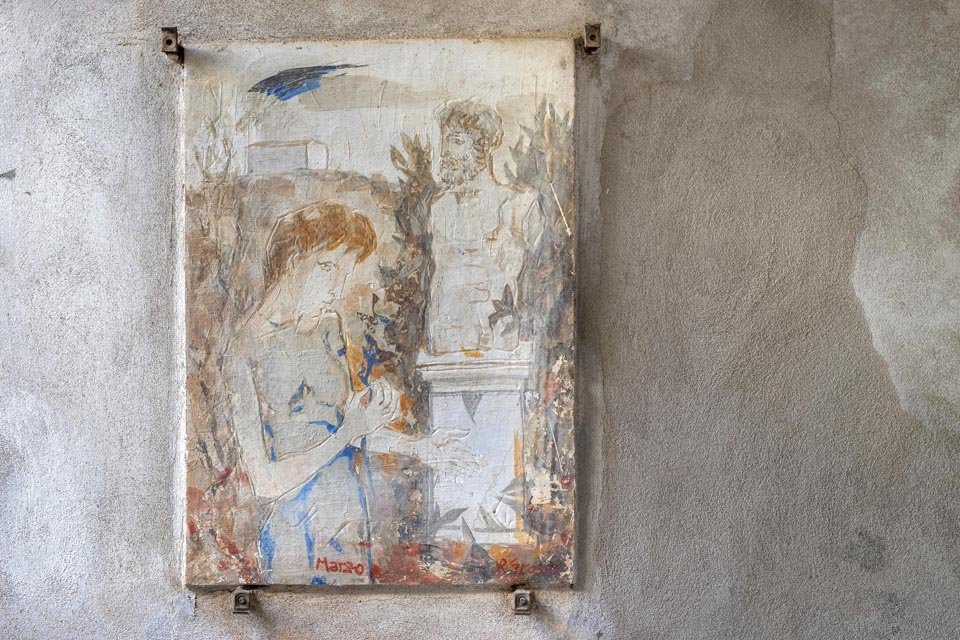Marzo – Renzo Grazzini
Borgo Museo | Affreschi 1975
ITALIANO | English below
La vita
Renzo Grazzini nasce a Firenze nel quartiere di Santa Croce nel 1912 da un padre calzolaio e una madre casalinga. Compie i suoi studi all'Istituto d'Arte di Porta Romana e da lì inizia il suo lungo cammino nella pittura; sentendosi molto legato a questo tipo di arte si diploma nel 1934. A causa dello scoppio della Prima Guerra Mondiale, il conflitto lo porta a servire il suo paese e viene spedito prima in Libia, poi in Abissinia e infine in Albania dove passa gran parte della sua vita, fino ai trent'anni circa. La guerra è per lui fonte di tormento e disperazione tanto che scrive nel suo diario: “ forse domani sarà tutto un lento morire dentro ciò che oggi stiamo perdendo”. Tornato dalla guerra, Grazzini; dal 1946 al 1972 insegna all'Istituto d'Arte di Porta Romana, la sua vecchia scuola, prima come maestro d'arte, poi come titolare della cattedra di pittura. Il 28 Gennaio 1990 Renzo Grazzini muore.
La poetica
Inizialmente i temi delle sue opere sono quelli tradizionali della pittura toscana: paesaggi, figure, nature morte; ma nei suoi quadri non c’è traccia di derivazione macchiaiola. L’impegno assunto nella guerra partigiana, le rovine e la morte tra le sue braccia dell’amico fraterno Bruno Becchi lasciano tracce profonde nel suo animo tanto che intorno agli anni cinquanta raffigura in una serie di disegni quelle drammatiche vicende, utilizzando principalmente colori come il bianco e il nero. Il suo neorealismo non appartiene ad alcuna corrente, ma è il frutto dell’insistita ricerca di un linguaggio di tipo formale in cui si confermano la grande invettiva e l’attitudine allo scavo psicologico che ne rivela la sensibilità e anche la delicatezza disegnativa, l’amorosa disposizione della pagina pur nel dilaniamento dell’immagine che in molte occasioni risente dell’espressionismo tedesco. Sono molto evidenti nella sua pittura i segni delle amicizie con Vasco Pratolini, Elio Vettorini e Ottone Rosai, con i quali condivide la cultura fiorentina di quel periodo.
L’opera a Castagno
Al pittore fiorentino viene affidato da Paloscia l'esecuzione dell'affresco Marzo per il borgo museo di Castagno. Egli decide di raffigurare una donna che tiene in mano un fiore blu con aria sconsolata; in secondo piano c'è un busto marmoreo maschile di memoria classica. Stilisticamente parlando, l'opera presenta la cifra dell'autore: i tratti sono di derivazione espressionista, sono semplificati, e i colori tendono tutti ad uno scarno bianco grigiastro ceruleo. La statua, circondata da vegetazione rigogliosa, potrebbe rappresentare un passato felice e prospero, che la ragazza rimpiange in un presente grigio, in cui l'unica cosa che si possiede è la speranza, metaforicamente il fiore blu.
ENGLISH
Biography
Renzo Grazzini was born in Florence in the Santa Croce district in 1912 from a cobbler father and a housewife mother. He completed his studies at the Porta Romana Art Institute and from there began his long journey in painting; feeling very attached to this type of art, he graduated in 1934. Due to the outbreak of the First World War, the conflict led him to serve his country and was sent first to Libya, then to Abyssinia and finally to Albania where most of the his life, up to about thirty years old. War is a source of torment and despair for him, so much so that he writes in his diary: "maybe tomorrow it will all be a slow dying inside what today we are losing". Back from the war, Grazzini; from 1946 to 1972 he taught at the Porta Romana Art Institute, his old school, first as a master of art, then as holder of the chair of painting. On January 28, 1990 Renzo Grazzini died.
Philosophy
Initially the themes of his works are the traditional ones of Tuscan painting: landscapes, figures, still lifes; but in his paintings there is no trace of Macchiaioli derivation. The commitment assumed in the partisan war, the ruins and the death in his arms of his brotherly friend Bruno Becchi leave deep traces in his soul so that around the fifties he depicts those dramatic events in a series of drawings, mainly using colours such as White and black. His neorealism does not belong to any current, but is the result of the insistent search for a language of a formal type in which the great invective and the aptitude for psychological excavation are confirmed, revealing his sensitivity and also his delicacy in drawing, the loving arrangement of the page despite the tearing of the image that on many occasions is affected by German expressionism. The signs of friendships with Vasco Pratolini, Elio Vettorini and Ottone Rosai, with whom he shares the Florentine culture of that period, are very evident in his painting.
Artwork in Castagno
Paloscia entrusted the Florentine painter with the execution of the Marzo (March) fresco for the museum village of Castagno. He decides to depict a woman holding a blue flower in her hand with a disconsolate air; in the background there is a male marble bust of classical memory. Stylistically speaking, the work presents the author's signature: the strokes are of expressionist derivation, are simplified, and the colours all tend to a meagre greyish cerulean white. The statue, surrounded by lush vegetation, could represent a happy and prosperous past, which the girl regrets in a grey present, in which the only thing you have is hope, metaphorically the blue flower.

